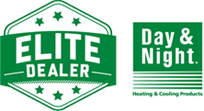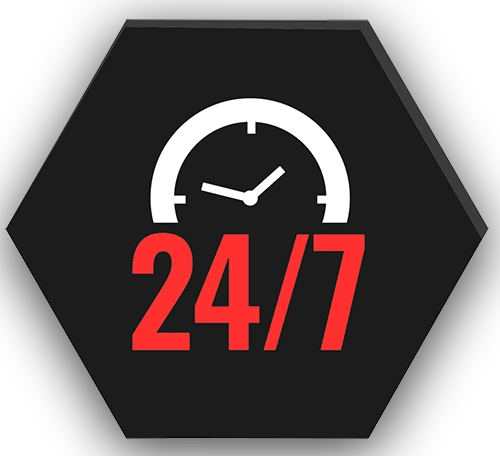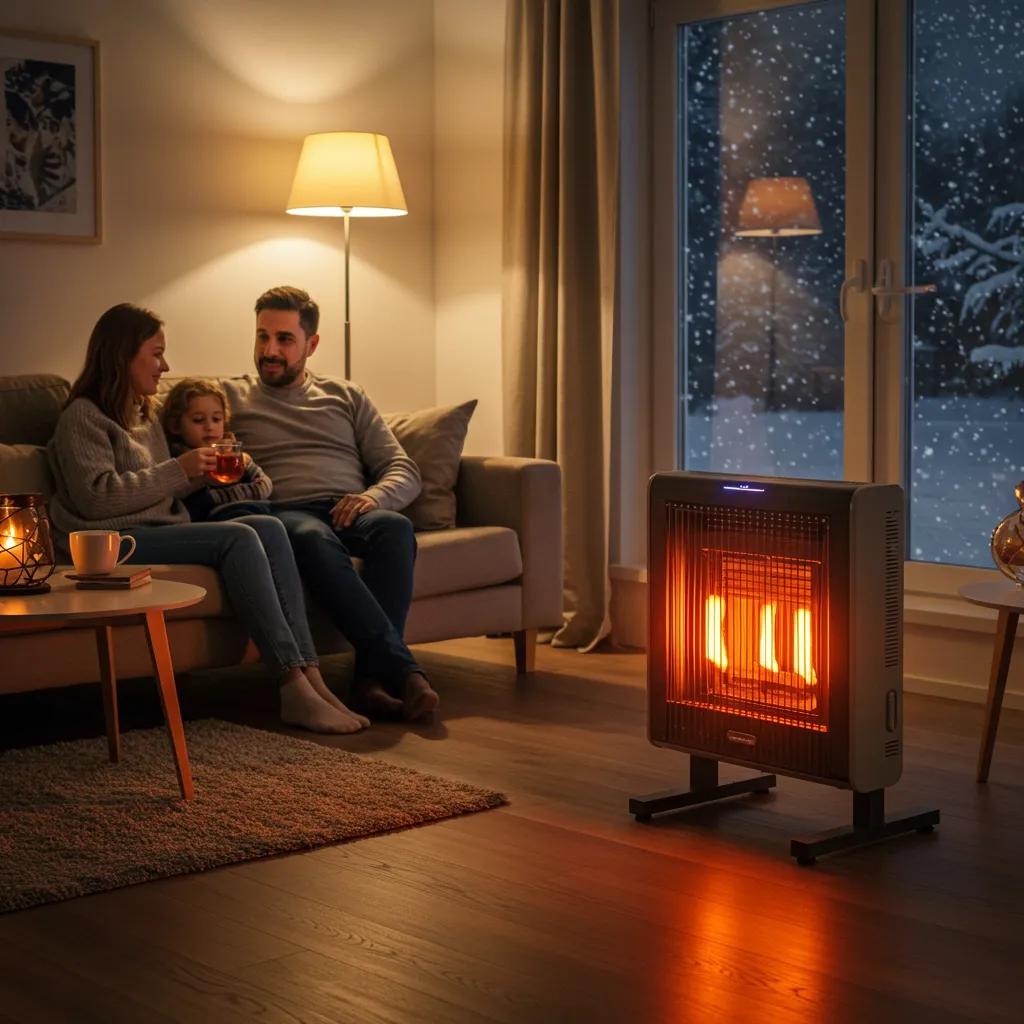
When Your Heater Won't Cooperate: Your Complete Furnace Repair & Troubleshooting Guide for Charlottesville, VA
When your heater decides to quit on a cold Charlottesville night, it can quickly turn your comfortable home or business into a source of stress and worry. This guide is here to help you navigate those moments. You’ll learn how to perform simple checks to rule out common issues, identify the most frequent furnace and heater problems, know exactly when to call Jones Heating & Air for expert help, and even how to set up a maintenance routine that saves you money and prevents breakdowns. We’ll walk you through five essential steps before you even think about calling for service, explore common symptoms like cold air blowing or unusual noises, detail our 24/7 emergency service options, explain our maintenance plans designed to keep your system running smoothly, and provide clear, step-by-step fixes for specific issues. Whether your furnace isn’t heating, your boiler pressure is low, or you need a hand relighting a pilot light, you’ll find straightforward solutions here, positioning Jones Heating & Air as your go-to local HVAC expert in Charlottesville, VA.
Quick Heater Checks: What to Do Before Calling for Service
Initial troubleshooting involves the basic checks you can do yourself, without needing special tools or technical know-how, to narrow down why your heating system isn’t working. By confirming settings, checking airflow, inspecting safety features, and ensuring power is on, you can often get your heat back up and running or at least pinpoint the problem before a professional arrives. These steps will also give you a better understanding of common issues and help our technicians arrive better prepared if further repairs are needed.
Checking Your Thermostat and Power: The First Steps
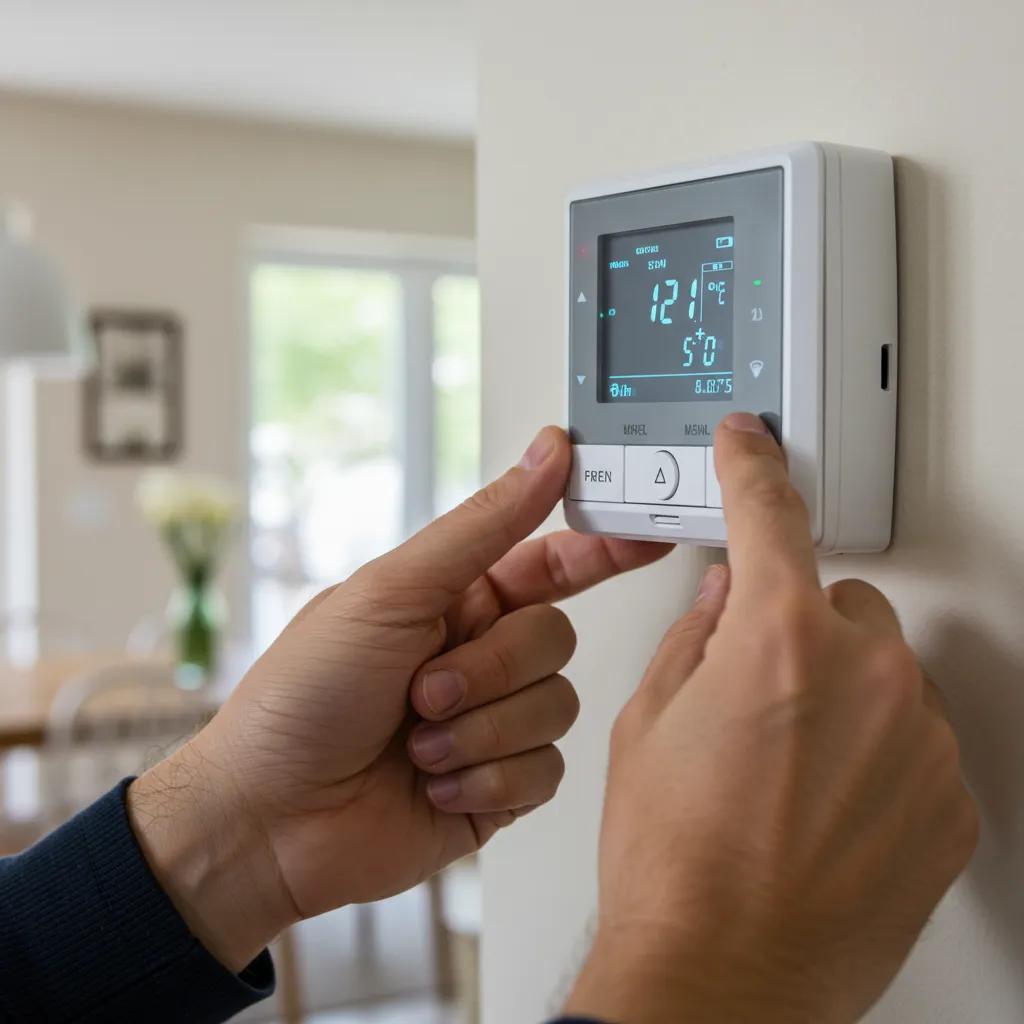
Start by making sure your thermostat is set correctly and has power. Sometimes, a simple incorrect setting or dead batteries are all that’s preventing your furnace from kicking on.
- Confirm your thermostat is set to “Heat” and the desired temperature is higher than the current room temperature.
- If the display is blank or flickering, it’s time to replace the batteries.
- Check your circuit breaker panel to ensure the breaker for your heating system is switched on.
- Try flipping the furnace power switch—usually located near the unit itself—off and then back on to reset its internal controls.
Taking these actions ensures that the signal to heat is actually reaching your furnace, ruling out basic user errors and power supply issues before we dive into more complex diagnostics.
Inspecting and Replacing Your Air Filters: A Crucial Step
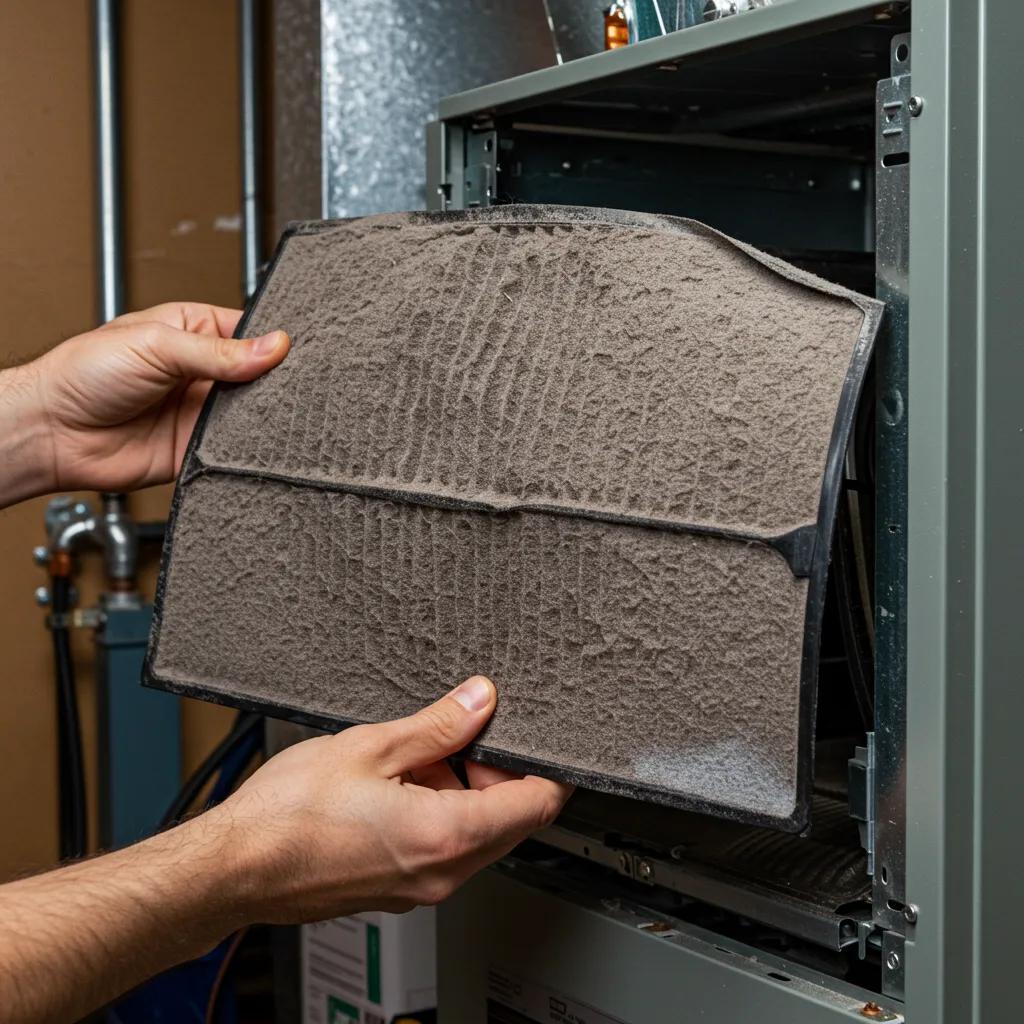
Dirty air filters are a common culprit, restricting airflow and leading to overheating, system shutdowns, or reduced heat output. A clean filter is essential for efficient combustion and proper air circulation throughout your home.
- First, turn off the power to your furnace and locate where the filter is housed.
- Gently slide out the old filter and hold it up to a light source. If you can barely see light through it, it’s time for a replacement.
- Install a new filter that matches the size and specifications recommended by your furnace manufacturer if more than half of the filter’s surface is visibly clogged.
- Make a note of the installation date and set a reminder to replace it every one to three months, depending on your home environment.
Keeping your filters clean prevents unnecessary strain on your heat exchanger and stops the system from cycling on and off too frequently, ultimately extending the life of your heating system.
Safely Checking and Relighting Your Pilot Light or Ignition
For gas furnaces, a pilot light or an electronic ignition system is crucial for starting the combustion process. If the flame sensor is dirty or the pilot light has gone out, your burner won’t ignite.
- Turn off your thermostat and the gas valve to the furnace. Wait about five minutes to allow any residual gas to safely dissipate.
- Carefully open the furnace access panel to find the pilot assembly or ignition module.
- If you see soot or corrosion on the sensor rod, gently clean it with a piece of fine-grit sandpaper.
- Follow your furnace manufacturer’s specific instructions for relighting the pilot or initiating the electronic ignition sequence.
- Once relit, turn the gas supply back on and confirm that you have a steady, blue flame or that the ignition spark is working correctly.
Ensuring a stable ignition source is key to preventing unexpected shutdowns and maintaining consistent heating services throughout your home.
Boiler-Specific Checks You Can Perform
Boilers need the right water pressure and accurate timer settings to heat your home effectively. Low pressure or a frozen condensate pipe can bring your system to a halt.
- Check the pressure gauge on your boiler and add water if necessary to bring it within the manufacturer’s recommended bar range.
- Make sure your boiler’s timer or clock is set correctly for the current date and your desired heating schedule.
- If the temperature has dropped significantly, inspect the condensate pipe for any ice blockages.
- If your boiler has a pressure relief valve that has activated, carefully follow safety instructions to reset it if needed.
These boiler-specific checks can help restore proper heating flow and resolve common issues related to the water system.
When to Reset Circuit Breakers or Furnace Power Switches
Electrical interruptions can sometimes cause breakers to trip or control switches to shut off power to your furnace. A simple reset can often resolve power-related shutdowns.
- Go to your main electrical panel and locate the circuit breaker specifically designated for your heating system.
- Flip the breaker completely off, and then back on to re-energize the circuit.
- Find the furnace’s inline power switch, turn it off for about thirty seconds, and then turn it back on to reset the control boards.
- Watch the furnace as it attempts to start up to confirm that the motor and ignition sequence are activating properly.
Resetting the power can clear minor control errors and may restore your heating operation immediately.
Common Furnace and Heater Issues in Charlottesville, VA
Furnace and heater problems often stem from blocked airflow, ignition failures, wear and tear on components, or electrical issues. Understanding these common problems and knowing the initial steps you can take can help speed up repairs and prevent them from happening again.
| Problem | Possible Cause | What You Can Do First |
|---|---|---|
| Blowing cold air | Dirty air filter or pilot light out | Replace the filter and try relighting the pilot |
| Strange banging or squealing noises | Loose blower components or worn belt | Check blower assembly mounts and inspect the belt |
| System cycling on and off frequently | Overheating or short cycling | Clean the filter and ensure vents aren’t blocked |
| Burning smell | Dust on heat exchanger or electrical issue | Run the blower to clear dust; inspect wiring if persistent |
| No ignition sequence | Faulty flame sensor or control board | Clean the flame sensor and reset the power switch |
Why Is My Furnace Blowing Cold Air Instead of Heat?
When your furnace is blowing cold air, it usually means there isn’t enough heat being generated or the airflow is restricted. A dirty filter can prevent warm air from circulating, while an extinguished pilot light or a malfunctioning ignition sensor stops the burner from heating the air. Making sure your filter is clean and your pilot light is steady can restore warm airflow. If the issue is with the sensor or ignition, cleaning the sensor or resetting the ignition system might help. Additionally, you can consider heating repair services.
What’s Causing My Heater to Make Strange Noises?
Unusual sounds from your furnace, like banging, clicking, or squealing, often point to mechanical issues or debris. Loose blower mounts can cause rumbling noises, worn belts might squeal, and clicking sounds could be from the ignition electrodes being misaligned. Regular lubrication of moving parts, timely belt replacements, and ensuring sensors are properly aligned can eliminate these noises and keep your system running smoothly.
Why Does My Heater Keep Cycling On and Off?
This frequent on-and-off pattern, known as short cycling, typically happens when the system overheats or detects resistance in the airflow. An excessively dirty filter or blocked ducts can trigger safety mechanisms that shut the system down prematurely. Cleaning your filters, opening up any closed vents, and checking that the blower is operating at the correct speed can prevent these repeated start-stop cycles and maintain a consistent temperature.
How Do Dirty Air Filters Impact My Heating System?
Air filters are designed to trap dust, pollen, and other airborne particles. However, when they become clogged, they create increased resistance in the airflow, forcing your furnace to work much harder. This not only drives up your energy costs but also increases the risk of overheating. Regularly replacing your filters ensures proper airflow, optimizes heat exchange, and reduces the overall strain on your system.
What Does a Burning Smell from My Furnace Mean?
A faint burning smell when your furnace first starts up might just be dust burning off the heat exchanger – a common occurrence at the beginning of the heating season. However, if the smell is strong, persistent, or smells like burning plastic or electrical components, it could indicate overheating electrical parts or deteriorating insulation. In such cases, it’s crucial to turn off the system immediately and call for professional inspection to prevent any potential fire hazards.
When It’s Time to Call Jones Heating & Air for Professional Furnace Repair
Calling in a qualified technician is the best course of action when your own troubleshooting efforts don’t resolve the issue or when you encounter more complex problems. Jones Heating & Air provides expert HVAC services to diagnose those hidden issues, ensure your system is operating safely, and get your dependable heat back up and running with minimal disruption.
Signs You Need an HVAC Technician’s Expertise
If your heating system continues to blow cold air after basic checks, cycles on and off erratically despite clean filters, if you notice any signs of gas leaks, or if the pilot light repeatedly fails, it’s time to call a professional. Issues with ignition modules, cracks in the heat exchanger, or problems with the electrical control board are beyond the scope of DIY repairs and require trained intervention.
How Jones Heating & Air Offers 24/7 Emergency Heating Repair in Charlottesville
Our dedicated local team is on standby around the clock to respond to your heating emergencies. We dispatch certified technicians equipped with the necessary diagnostic tools and common replacement parts. Our rapid response system ensures that when a cold snap hits Charlottesville, we can provide immediate assistance, minimizing your discomfort and any potential business interruptions.
The Advantages of Professional Furnace and Boiler Repairs
When you choose an experienced technician, you benefit from accurate problem diagnosis, safe calibration of combustion processes, component replacements that are often covered under warranty, and the restoration of optimal system efficiency. Professional repairs not only reduce your energy consumption and extend the lifespan of your equipment but also ensure that your system is operating according to manufacturer standards for lasting comfort.
How to Schedule Service or an Emergency Repair with Jones Heating & Air
Booking professional help is simple. You can reach out to Jones Heating & Air through the service request form on our website or by finding us on our Google Business Profile. Our friendly support staff will confirm your details, prioritize your request, and arrange for a technician to visit at a time that’s convenient for you.
Preventing Heater Breakdowns and Saving Energy with Regular Maintenance
Preventative maintenance involves a series of systematic inspections, cleanings, and adjustments designed to keep your heating system running at its best and to avoid unexpected failures. An annual tune-up ensures all components are clean, properly lubricated, and adjusted, while also verifying safety features and optimizing energy usage.
Why Annual Heating System Maintenance is So Important
Studies show that regular, scheduled HVAC maintenance plan can reduce emergency breakdowns by as much as 95% and can lower your energy bills by 5–15%. During a tune-up, our technicians will adjust burner flames, check heat exchangers for any signs of damage, and confirm that the system is operating safely, ensuring reliable heat throughout the coldest months.
What’s Included in a Typical Heating Maintenance Plan?
Our comprehensive maintenance plans cover:
- Thorough cleaning of burners and burner ports
- Lubrication of all moving parts
- Testing of safety interlock systems
- Precise calibration of thermostat controls
- Inspection of all electrical connections
- Replacement of air filters
These essential tasks help identify potential wear and tear early on, restore efficient combustion, and maintain the overall reliability of your system.
How Often Should I Replace Air Filters and Check Components?
You should plan to replace your air filters every one to three months, depending on your home’s conditions (like pets or allergies). Components such as blower assemblies, belts, and safety switches should be inspected at least once a year. Consistent filter replacement is key to preventing airflow restrictions, and regular professional inspections ensure all components are functioning correctly.
How Maintenance Boosts Energy Efficiency and Cuts Costs
A heating system that is well-maintained operates with the correct fuel-to-air ratios, balanced airflow, and accurate temperature control, which means less energy is wasted. This improved efficiency, combined with fewer emergency repairs, leads to noticeable savings on your utility bills and reduces overall maintenance expenses.
Step-by-Step Troubleshooting for Specific Heater Issues
These targeted troubleshooting guides will walk you through specific steps for common problems, allowing you to take precise corrective actions before needing professional service. This approach helps eliminate guesswork and clarifies when it’s time to call in the experts.
Fixing a Heater That Won’t Turn On: Power and Thermostat Checks
Start by confirming that your system is receiving power and that the thermostat is functioning correctly:
- Check the circuit breaker for your heating system and reset it if necessary.
- Turn the furnace power switch off for about thirty seconds, then turn it back on.
- Replace the batteries in your thermostat and double-check that it’s set to “Heat.”
- Observe the furnace’s start-up sequence to see if the control board and blower are activating.
These initial steps help isolate basic power and control issues, ensuring that any further repairs will address genuine mechanical problems.
Addressing Furnace Blowing Cold Air: Filter and Pilot Light Solutions
If your furnace is blowing cold air even though the blower is running, check your airflow and ignition system:
- Replace any clogged air filters to restore proper airflow.
- Attempt to relight the pilot light or cycle the electronic ignition module.
- Clean the flame sensor rod to ensure consistent combustion.
- Open any supply vents that may have been closed to ensure balanced heat distribution.
By addressing both airflow and ignition sources, you can resolve the most common reasons for cold air output.
Resolving a Boiler Not Heating: Pressure and Timer Adjustments
If your boiler isn’t heating water effectively:
- Examine the pressure gauge and add water if needed to reach the recommended levels.
- Reset the timer or programming panel to ensure correct heating schedules are in place.
- Check for and clear any ice blockages in the condensate pipes, especially during freezing temperatures.
- Test the pressure relief valve to confirm it’s operating safely.
Adjusting water pressure and programming can restore boiler circulation and resolve timer-related interruptions.
Diagnosing and Repairing Strange Furnace Noises
Identify the source of unusual noises by isolating different parts of the system:
- Listen for rattling sounds near the blower housing and tighten any loose brackets.
- Note any squealing noises, which often come from belt-driven motors; inspect and replace worn belts.
- If you hear banging or popping, it might be time to clean the burners and heat exchanger surfaces.
- Examine your ductwork for any loose panels that might be vibrating and secure them.
Systematically diagnosing these sounds can prevent further mechanical damage and help maintain quiet operation.
Stopping Your Heater from Cycling On and Off Too Frequently
Short cycling often occurs due to the heat exchanger overheating or restricted airflow: air conditioning services
- Replace your air filters and make sure all supply and return vents are clear of obstructions.
- Verify that the blower speed settings are configured according to the manufacturer’s recommendations.
- Inspect limit switches and reset any safety controls if necessary.
- Ensure that the thermostat wiring is secure and properly calibrated.
Addressing airflow issues and safety limit settings can stop repetitive cycling and help maintain a consistent, comfortable temperature.
Frequently Asked Questions About Heater Troubleshooting
Homeowners often have questions about why a running furnace might not be producing heat, when it’s appropriate to call for professional help versus a DIY fix, simple temporary solutions, the impact of smart thermostats, and what to do during emergencies specific to our local conditions. Clear answers to these questions can build your confidence in troubleshooting safely and effectively.
Why Isn’t My Heater Working Even Though It’s Running?
A furnace that runs but doesn’t produce heat often has a dirty flame sensor, a clogged air filter, or a cracked heat exchanger that’s preventing proper combustion. Cleaning the sensor, replacing the filter, and inspecting the heat exchanger can often restore heat. However, internal cracks in the heat exchanger require immediate professional attention.
How Do I Know When to Call a Professional vs. Try a DIY Fix?
You should call a qualified technician if basic troubleshooting steps—like resetting power, changing the filter, or relighting the pilot—don’t restore heat within a couple of hours. Also, call if you detect any gas odors or if the furnace cycles repeatedly without providing warmth. Complex issues such as heat exchanger damage, control board failures, or problems with safety interlocks are best left to the professionals.
What Are Simple Fixes I Can Try Before Calling an HVAC Technician?
Before you schedule a service appointment, you can try these simple fixes: HVAC near me
- Double-check your thermostat settings and replace the batteries if needed.
- Reset your heating circuit breaker and the furnace power switch.
- Replace or clean your air filter.
- Relight the pilot light or cycle the electronic ignition module.
These actions resolve the majority of minor issues and will help clarify whether professional repair is necessary.
How Can Smart Thermostats Affect My Heater’s Performance?
While smart thermostats offer advanced control features, they can sometimes experience connectivity issues, software glitches, or calibration drift that interfere with the heating signal sent to your furnace. Checking the programming, performing a factory reset, or temporarily switching to a basic thermostat mode can help diagnose electronic control problems.
What Should I Do During a Heating Emergency in Charlottesville, VA?
In a heating emergency, first ensure the area is safe. If you suspect a gas leak, shut off the gas supply immediately. Then, contact a 24/7 emergency service provider. Jones Heating & Air’s emergency team is prepared to respond quickly to ensure your critical comfort and safety until normal operations can be restored.
Where to Find Reliable Furnace Repair and Heating Services in Charlottesville, VA
Local expertise is invaluable because service providers understand the unique challenges of our regional climate, common equipment models used here, and specific county safety codes. Jones Heating & Air combines trusted technical skills, prompt service, and comprehensive warranties to deliver dependable heating solutions throughout Charlottesville and the surrounding areas.
Why Choose Jones Heating & Air for Your Heating Repairs?
Jones Heating & Air is a locally established business with certified technicians who are dedicated to your comfort and safety. Our expert diagnostics, clear and upfront pricing, and commitment to providing long-lasting solutions set us apart from the rest. We aim to give you peace of mind, whether you’re facing a heating emergency or need routine service.
What Areas Does Jones Heating & Air Serve for Emergency Heating Repair?
Our service area covers all of Charlottesville city and extends into neighboring counties. Our rapid response protocols mean that urgent heating calls, whether in urban neighborhoods or rural areas, receive prompt attention. We strive to minimize downtime and maintain indoor comfort for both homes and commercial properties.
How Do Customer Reviews Reflect Our Heating Repair Quality?
Our positive customer feedback consistently praises our punctuality, thorough diagnostic process, and respectful communication. Reviewers frequently commend the clarity of our explanations, the effectiveness of our repairs, and the overall professionalism of our technicians, reinforcing the trust placed in our local expertise and reliability.
How to Contact Jones Heating & Air for Fast and Trusted Heating Service
To arrange for fast heating repair or to schedule routine maintenance, please contact the Jones Heating & Air office. You can use the service request form on our website or find us on our Google Business Profile. A member of our support team will assist you in scheduling your service, ensuring you receive timely and expert assistance.
Jones Heating & Air is here for you as Charlottesville’s trusted HVAC partner, guiding you through every step—from initial troubleshooting to professional repair and ongoing maintenance—to ensure your heating system operates safely and efficiently all year round.

